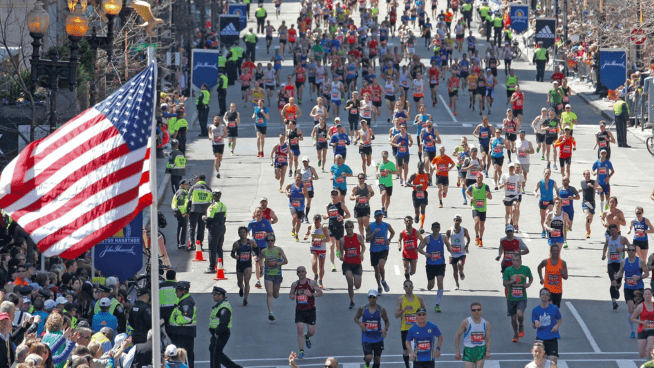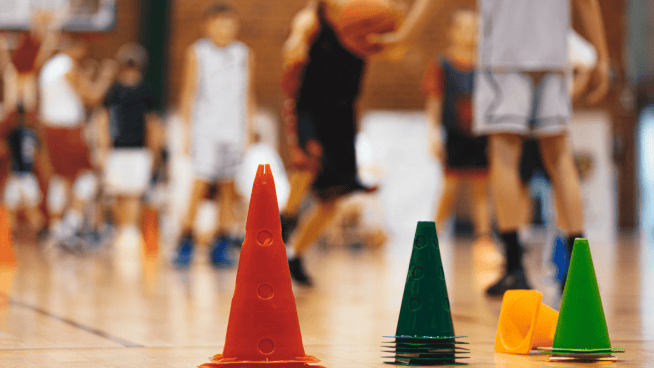Simple and Effective: This Mass-Building Workout Requires Just 5 Exercises Per Session
Increasing muscle mass is a goal of athletes across many sports, as well it should be. Any non-weight-class athlete (most sports) should aim to maximize muscle mass to maximize performance with the best mass-building workout for their individual level of strength and conditioning. Undersized athletes would be well served by focusing attention on tailoring their diet and training to maximizing hypertrophy.
Unfortunately, many people still think of body part splits and isolation exercises when creating mass-building workouts. These methods might build muscle, but they do not transfer to sports performance as well as full-body compound exercises and training the entire body during each training session.
RELATED: I Lift Weights But Can’t Build Muscle. What’s Wrong?
Here are general guidelines for the best mass-building workout for athletes:
- Athletes should do resistance training several times per week, performing mainly compound movements like Squats, Deadlifits, Presses, Pulls and Carries.
- Frequency should be 3-5 days per week to allow for proper recovery times between sessions. Three times a week is a great starting point.
- Intensity should be at least 60 percent and should not exceed 80 to 85 percent to allow for enough volume to stimulate hypertrophy.
- A variety of rep ranges, tempos and intensities should be used to stimulate the maximum amount of hypertrophy.
- It goes without saying that diet and recovery play critical roles in attempts to build muscle. Specifics are outside of the scope of this article, but athletes should eat more calories than they burn to add lean muscle mass; and protein intake must be sufficient to support the building of new muscle. In addition to diet, proper sleep is an athlete’s best friend for recovery and building muscle.
RELATED: 5 Quick Workout Fixes for Faster Muscle Growth
The program below includes different types of exercises to build strength and muscle in a variety of positions and muscle groups. It also aims to increase hypertrophy of both fast- and slow-twitch muscle fibers. Most athletes know that fast-twitch fibers have the greatest potential for growth and are the most powerful, but slow-twitch fibers also have great potential for growth and can be beneficial late in games. Tempo work with a 2-second eccentric and a 2-second concentric phase can help hypertrophy in slow-twitch muscle fibers. Isolation exercises can be performed after compound exercises to strengthen weak muscle groups and aid in hypertrophy.
Program Notes
- Read tempo instructions as follows: eccentric, pause, concentric. E.g., 201 tempo means 2 seconds down (eccentric), no pause at the bottom, and 1 second up (concentric).
- Do your best with the available equipment. Each exercise can be completed with a variety of tools.
- No exact percentages are given. Instead, feel out the weights and aim to increase or maintain weight as volume increases.
RELATED: What You Need to Know About Gaining Muscle Mass
Day 1 (Monday)
Day 2 (Wednesday)
Day 3 (Friday)
RECOMMENDED FOR YOU
MOST POPULAR
Simple and Effective: This Mass-Building Workout Requires Just 5 Exercises Per Session
Increasing muscle mass is a goal of athletes across many sports, as well it should be. Any non-weight-class athlete (most sports) should aim to maximize muscle mass to maximize performance with the best mass-building workout for their individual level of strength and conditioning. Undersized athletes would be well served by focusing attention on tailoring their diet and training to maximizing hypertrophy.
Unfortunately, many people still think of body part splits and isolation exercises when creating mass-building workouts. These methods might build muscle, but they do not transfer to sports performance as well as full-body compound exercises and training the entire body during each training session.
RELATED: I Lift Weights But Can’t Build Muscle. What’s Wrong?
Here are general guidelines for the best mass-building workout for athletes:
- Athletes should do resistance training several times per week, performing mainly compound movements like Squats, Deadlifits, Presses, Pulls and Carries.
- Frequency should be 3-5 days per week to allow for proper recovery times between sessions. Three times a week is a great starting point.
- Intensity should be at least 60 percent and should not exceed 80 to 85 percent to allow for enough volume to stimulate hypertrophy.
- A variety of rep ranges, tempos and intensities should be used to stimulate the maximum amount of hypertrophy.
- It goes without saying that diet and recovery play critical roles in attempts to build muscle. Specifics are outside of the scope of this article, but athletes should eat more calories than they burn to add lean muscle mass; and protein intake must be sufficient to support the building of new muscle. In addition to diet, proper sleep is an athlete’s best friend for recovery and building muscle.
RELATED: 5 Quick Workout Fixes for Faster Muscle Growth
The program below includes different types of exercises to build strength and muscle in a variety of positions and muscle groups. It also aims to increase hypertrophy of both fast- and slow-twitch muscle fibers. Most athletes know that fast-twitch fibers have the greatest potential for growth and are the most powerful, but slow-twitch fibers also have great potential for growth and can be beneficial late in games. Tempo work with a 2-second eccentric and a 2-second concentric phase can help hypertrophy in slow-twitch muscle fibers. Isolation exercises can be performed after compound exercises to strengthen weak muscle groups and aid in hypertrophy.
Program Notes
- Read tempo instructions as follows: eccentric, pause, concentric. E.g., 201 tempo means 2 seconds down (eccentric), no pause at the bottom, and 1 second up (concentric).
- Do your best with the available equipment. Each exercise can be completed with a variety of tools.
- No exact percentages are given. Instead, feel out the weights and aim to increase or maintain weight as volume increases.
RELATED: What You Need to Know About Gaining Muscle Mass












